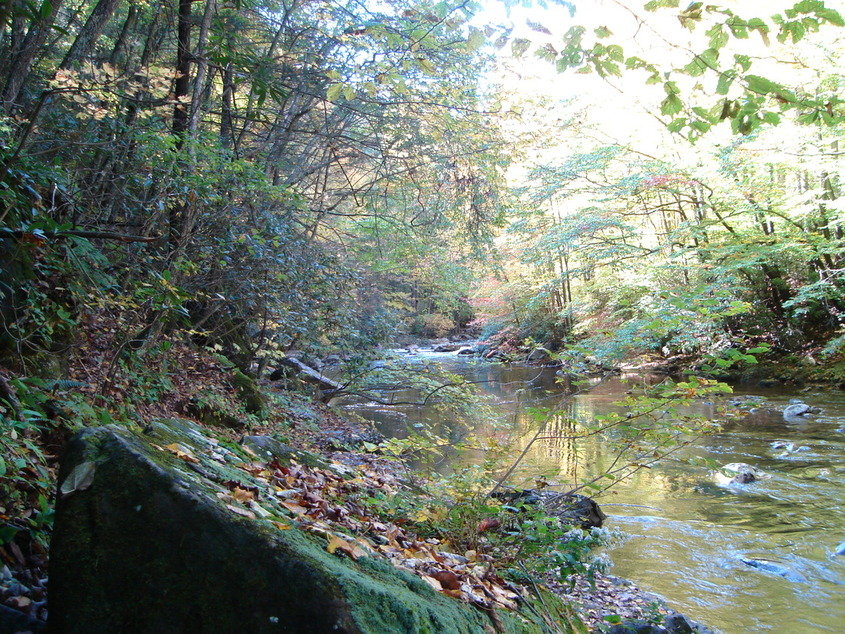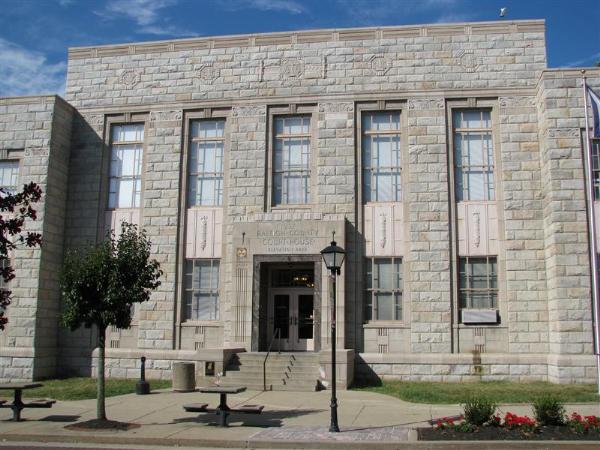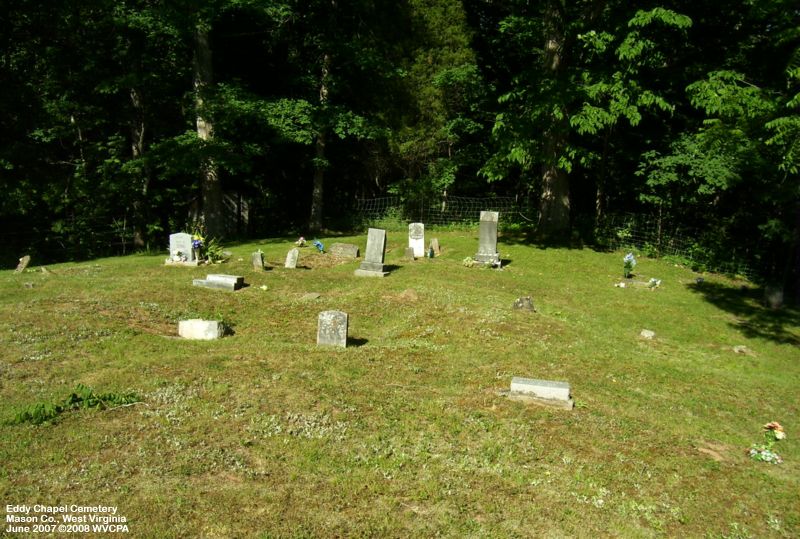The former West Virginia Ordnance Works (WVOW) was an explosives manufacturing facility constructed for the sole purpose of producing 720, 000 tons of TNT per day. It was constructed on 8,323 acres along the east bank of the Ohio River, along State Route 62, 6 miles north of Point Pleasant, West Virginia.
From 1942 to 1945, the West Virginia Ordnance Works (WVOW) manufactured explosives for use in munitions and explosives for the war effort. Although owned by DoD, WVOW was operated by a private company to produce TNT. When it closed in 1945, WVOW was declared surplus, and the structures were salvaged or disposed. The former West Virginia Ordnance Works is on the National Priorities List and work is being done there by the Huntington District of the U.S. Army Corps of Engineers.
Anyway, the TNT area hasn't actually manufactured TNT since WW2 ended. It's now part of the McClintic Wildlife Management area and the igloos are above-ground concrete bunkers where the TNT was stored. They're designed in a way that planes passing over cannot tell they're there... And that if one should explode it wouldn't set off a chain reaction.
Most of the igloos are now privately owned or owned by the army, and out of hundreds, only a few are accessible, and only three of those are "open to tourists."
After the war, it WAS a popular place for private enterprises to use in storing TNT and related paraphernalia, and to this day, there's a good chance that some of the igloos still ARE being implemented for that. However, in the 1980s, the whole area was added to the government's SuperFund list after fishermen reported a red, bubbling goo coming up from the ponds. Allegedly, a lot of the bunkers were supposed to have been cleaned out, but again, who knows.
The area's REAL claim to fame, however, comes from Mothman. The first reported sighting of Mothman came in November of 1966 from the area of the North power plant (which was torn down in the 90s). The next night, some locals went out to the bunker area to try and scare people out looking for Mothman, when they they allegedly encountered him themselves.
 In addition to Mothman, many other areas around the property are said to be haunted, especially the area around the present-day shooting range, where there are no less than two murders taking place there in recent history.
In addition to Mothman, many other areas around the property are said to be haunted, especially the area around the present-day shooting range, where there are no less than two murders taking place there in recent history.However, my story comes from the area around the old igloos...
On a whim one summer night in 2008, my friend and I went exploring the TNT area in Pt. Pleasant . We've checked out the accessible igloos many times, only three of which were actually opened, but he wanted to show me some pallets, drums, and other debris that had recently been placed in front of a few of the privately owned igloos, which were located down a different trail than the one that held the open igloos.
This time of year, there are gates blocking off the small roads, so you have to take the trail by foot. We had two flashlights and the moon was REALLY bright, so the trail was well lit. We went down the trail and got to see three igloos, but then the trail was cut off by a small stream that was overflowing, so we turned back around. Near the first igloo, the one closest to the car, I smelled what I thought was a dead animal. I didn't say anything, because even though the smell was REALLY strong, and I didn't smell it on our trip in, we were out in the middle of a wildlife area... Its only natural to smell a dead animal sometimes.
A few steps later, we were back to where we had parked the car. To get back to the car, we had to go around a big farm gate, which was no problem... Except I'm a klutz. I got my pants stuck on a weed or something, so I was holding on to the gate's pole with both hands trying to shake myself free. My friend was laughing at me, and I was laughing, but cursing, staring down at the ground trying to figure out why I was so tangled up. I felt what felt like tall grass or weeds whipping around my ankles, but didn't SEE them.
In my peripheral vision, I saw a human form come towards me from my left side... the side closest to the car, and thus, freedom. The "person" put his arm on my shoulder to steady me. At first I thought it was my friend who had somehow managed to slip behind me and was trying to help me out. Then it clicked that something was REALLY not right.
It wasn't exactly tunnel vision, but somehow I seemed to subconsciously block out everything around me, and could only focus on this shape that was slightly in front of me, and it seemed like the whole scene was shot in movie mode, as if I were watching it on TV, not standing there. I could only see the side/back area of the figure. It was a younger male wearing a white t-shirt, with tan skin, and not jet black hair, but really dark brown, cut short, but longer on the top than on the sides. It only stood about 6 feet, and wasn't very muscular... Just average built, if not maybe on the slim side.
What clicked was... The friend I was with was wearing a gray sleeveless shirt and is HEAVILY tattooed with full sleeves on both arms. He stands about 6'5 and is a bigger guy, fairly muscular, with long light brown hair. This was definitely not him, especially since after I freed myself, I whipped around and he was about a foot behind me on the wrong side of the gate still. I snapped back around to see what DID help me, and it was gone.
I didn't even say anything really until we got back safely in the car and started down the road, and I told him what I saw. He swears he didn't see anything, but knows that I have a history of seeing things that most people can't see, and saw how excited, yet shaken I was, so he believed that I at least THOUGHT I saw something. He said something to the affect of maybe whatever was there was warning us not to go down that path. To me, that didn't make any sense, since I had only experienced it AS WE WERE LEAVING. The first thing I said was the first thing that popped into my head... He didn't want us to leave.
That opened up a whole other discussion, albeit a facetious one, about there possibly being a body buried back there somewhere. The TNT area has seen its fair share of murders and body dumping... So it wouldn't be completely unheard of. I mentioned that there was definitely SOMETHING dead back there, referencing that horrid stench I had smelled just previous to seeing the apparition. Again, my friend swears he didn't smell anything, which I thought was odd, because the stench was so overpowering. But now looking back... Maybe it was an introductory olfactory response to what was about to happen...
I've already told him that if a dead body shows up, don't bother to tell me about it. Instead, I'd just like to continue on thinking I was either hallucinating, or saw a residual image of an event that has probably happened before in that spot--two legend trippers out there exploring the igloos...chick gets caught and boy comes to save her. As an update, no body was ever found to my knowledge, and this just isn't a "case" that I feel I want to investigate or research further at this time.
*The photo is from that night, and shows some of the stuff that was sitting out in front of one of the igloos.*


























 Colonial Lanes was built in 1959 on Huntington's West Side. Shortly after it was built, ten additional lanes were constructed, along with a connected beer tavern known as the Taproom.
Colonial Lanes was built in 1959 on Huntington's West Side. Shortly after it was built, ten additional lanes were constructed, along with a connected beer tavern known as the Taproom.


